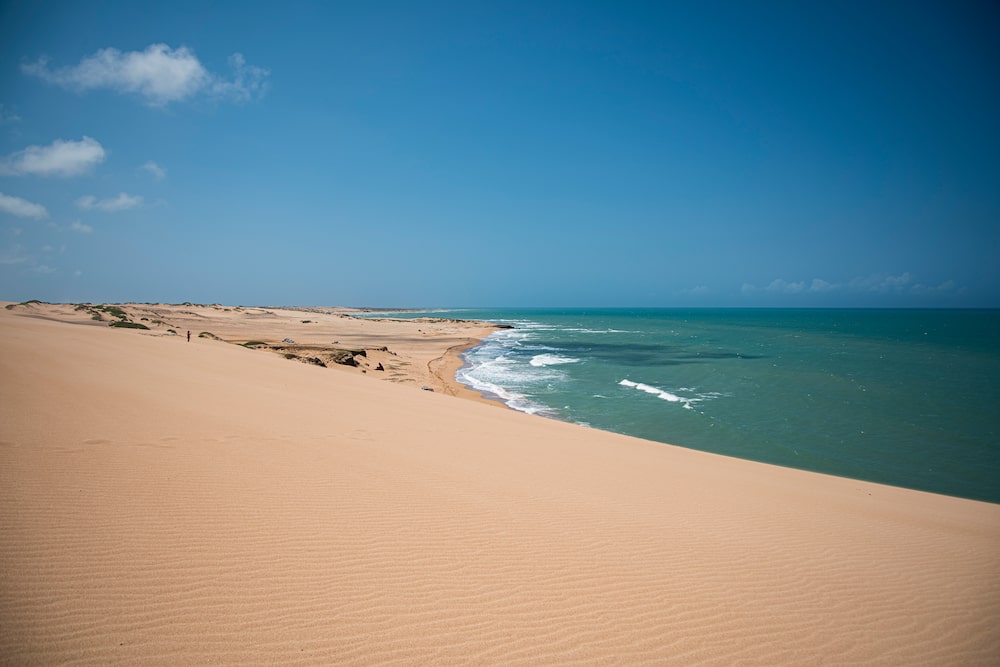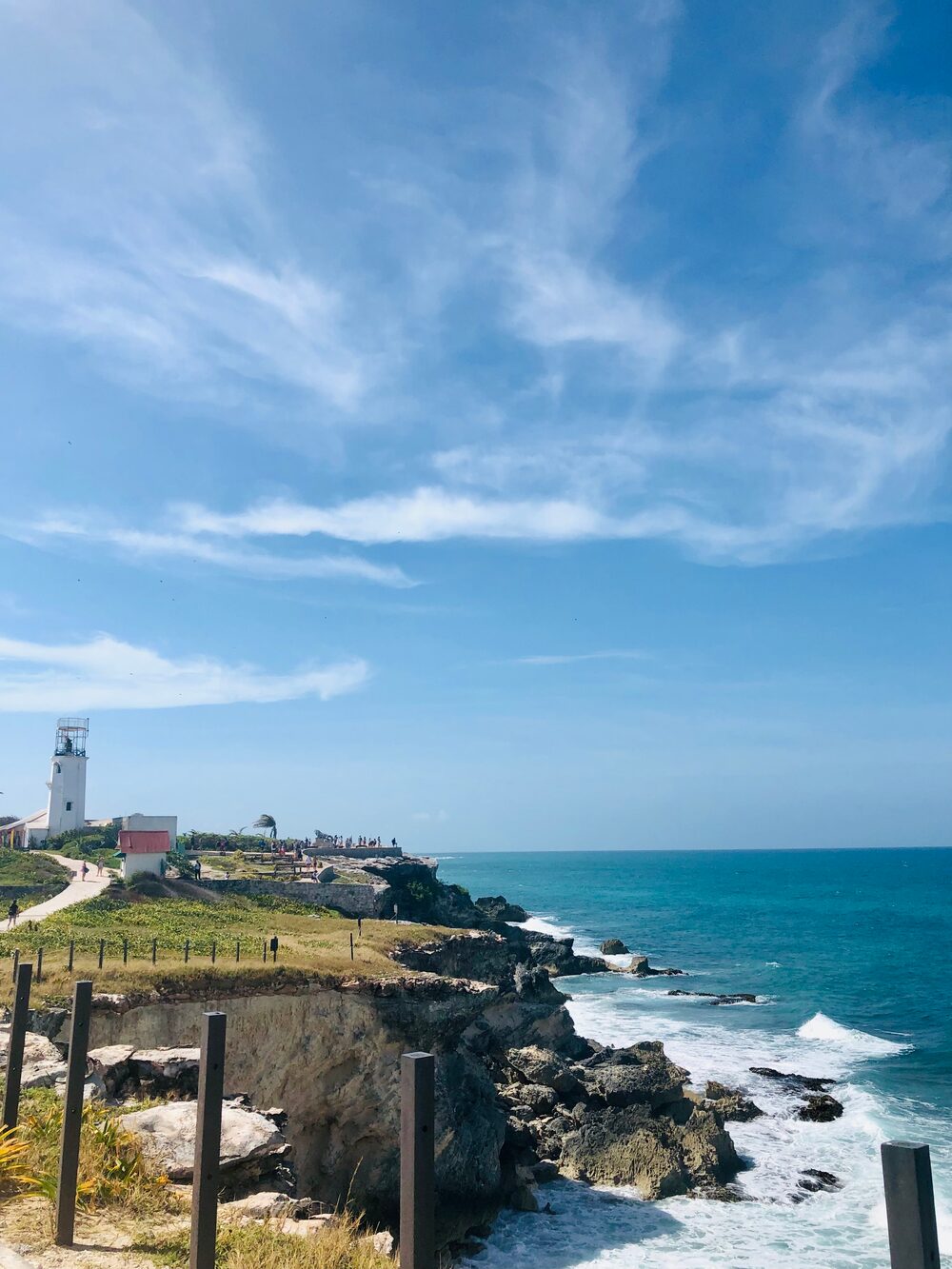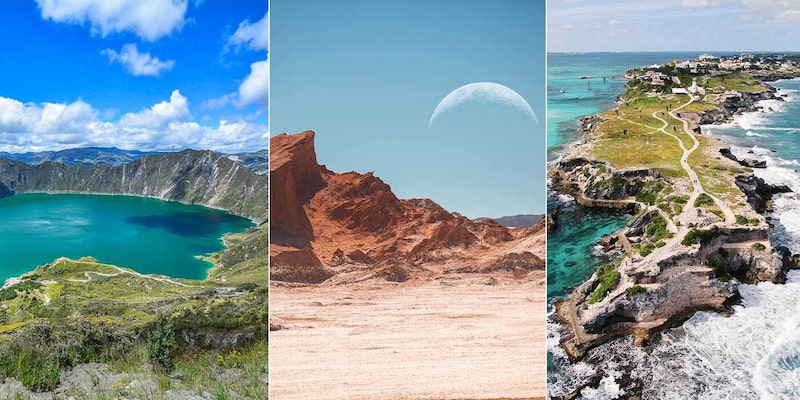Let the Latin American charm in all its different forms captivate your traveling soul in 2022 after a not-so-brief break with forgotten maps on the shelf and empty backpacks.
After two years of lockdowns and quarantines, your passport needs to be dusted off and Bloomberg Linea shares with you a list of recommendations for your next escapades, prepared by a team that loves to pack their bags and take a flight or hit the road.
From the desert to the sea, passing through lagoons and mountains, we show you some options to consider if you plan to continue discovering Latin America’s unparalleled spots, landscapes and cities with their rich culture, history, beauty, mysticism, flavor and color, as well as the hidden gems of many sites.
Even though the tourism industry has once again experienced a shock with the appearance of the Omicron variant, several experts have expressed that mankind will eventually be able to coexist with Covid. So get ready and board that flight or take that bus without forgetting about the sanitary measures in force and necessary in the different countries.
The Bloomberg Línea team proposes these places in some of our region’s countries that should be on your bucket list. They will surely exceed your expectations, take your breath away, and accelerate the beating of your heart.
Don’t miss the opportunity and don’t forget to review the local sanitary guidelines.
Argentina
Bariloche
This is the chosen destination par excellence in Patagonia. The snow in winter makes this city one of the main destinations for skiing and snowboarding in the mountains, enabling a series of unique sports and leisure activities.
Lake Nahuel Huapi and its offshoots, Lake Moreno, Lake Gutiérrez, the ancient myrtle forests, and mountain refuges are some of the natural attractions that Bariloche offers. Complementing this, over the years an extensive gastronomic, cultural and sporting variety has been added.
There is rafting and zip-lining for the adventurous, a beer circuit for malt lovers, and beaches for those who prefer to relax and sunbathe.
Traveling, by car or bicycle, the Route of the Seven Lakes is the perfect complement.
Iguazú Falls
In November, the Iguazú Falls celebrated 10 years as one of the seven natural wonders of the world. It is one of the main attractions of the country, visited by both local and foreign tourists. The site is at the border of the Argentinean province of Misiones and the Brazilian state of Paraná.
This is the largest cataract Two kilometers of waterfalls of more than 70 meters, and 275 cascades of different heights. Among these falls stands out the Garganta del Diablo (Devil’s Throat), of 80 meters. To complement this aquatic spectacle are the surrounding vegetation and wild landscape, the Misiones jungle, a sanctuary for half of the bird species registered in Argentina, and the greatest diversity of orchids in the country.
Brazil
Fernando de Noronha
The Fernando de Noronha archipelago, in the state of Pernambuco, in northeastern Brazil, has gained fame as a favorite destination for celebrities and is said to offer the perfect combination of crystal-clear waters, sands that reflect the sun and incredible marine life where surfers from all over the world gather. In this amazing place, which is a UNESCO World Heritage Site, you can dive into the coral reefs, and even interact with dolphins and turtles. Access to this jewel of the Brazilian coast is restricted, with a limit on the number of visitors for environmental reasons, conservation and logistical shortcomings.
Trancoso
30 kilometers from Porto Seguro, in the southern state of Bahia, lies this beautiful well-known secret of exotic natural beauty, which is one of the first settlements founded by the Portuguese in Brazil. This former fishing village will welcome you with incredible peace and tranquility if you are looking for a break. Here you will find some plazas and a mix of colorful houses, and fancy and chic styles.
Also, you will be able to enjoy pristine beaches along with a large series of cliffs.
Plus: Urca
Rio de Janeiro’s renowned neighborhood is surrounded by Guanabara Bay. Pão de Açúcar, the nearly 400-meter-high rock rising above the sea on a peninsula jutting out into the Atlantic Ocean, is the most famous tourist site in Urca and the second most famous sight in Brazil.
Pão de Açúcar is linked to Morro da Urca, which is 220 meters above sea level, flying the Carioca skies in a cable car.
After taking two cable cars to reach it, you will be able to enjoy the best view in Rio de Janeiro. If you are more adventurous in spirit, take the 1.5 km trail between the hills and some straight paths that starts at Vermelha beach.
On the way down you can cool off in the sea.
Chile
San Pedro de Atacama y the Valley of the Moon
If you want to be close to the moon, the Atacama Desert, in northern Chile, is a destination where you will feel like you can almost touch it.
It offers one of the best sites in the world: the Valley of the Moon. From there, the sky seems closer to the Earth and the dunes look endless on the horizon. The sunsets are one of the greatest visual spectacles in this tourist destination. Not in vain a series of astronomical observatories have been installed nearby.
This desert is known worldwide to be the most arid, and is one of the main tourist attractions in the country, although it is not the only thing that dazzles visitors. Also, on the altiplano, you can find the Tatio Geysers. The gushing of waters at more than 85 degrees Celsius emerging from deep in the earth is another of the natural spectacles here.
All of this is just a few kilometers from the city of San Pedro de Atacama, which is known for its ancient culture and a historic center that displays the town’s church bearing the same name. There is a variety of hotels, restaurants, and bars that welcome visitors as if they were at home, along with gastronomy that mixes the flavors of Chilean, Peruvian, and Bolivian cuisine. Its temperatures are typical of the desert, although the warmest months are between January and April and October and December.
Colombia
Cabo de la Vela
It’s a heavenly place where desert peninsulas and seas of crystalline water merge. It is the northernmost point of Colombia. The waves and winds of this area make it ideal for sports such as kitesurfing and windsurfing. It is a landscape full of contrasts, with dry forests, desert dunes, intense sun, and blue seas.
The Cape is also an area inhabited by Wayuu indigenous communities which make it a territory full of culture, mythical stories, textiles, and ancestral customs. There are other places close to this destination with amazing views that are a mandatory visit such as the Manaure Salt Flats, the Pilón de Azúcar, the Taroa Dunes, and Punta Gallinas.

The Coffee Triangle
The Coffee Triangle (Eje Cafetero) is one of the best known and most representative regions of Colombia, and there’s plenty of reasons for that. The landscape is typical of a scene from a movie of the past. Throughout the departments that comprise it, one can observe coffee plantations, towns with colorful houses, cobblestone streets, forests, snow-capped mountains, and wax palms, typical of the high Andean valleys.
In addition, in this area, where spring seems to be constant due to the presence of flowers such as orchids and heliconias, you can enjoy hot springs that descend from high waterfalls, drink an authentic cup of Colombian coffee, and admire the campesino traditions that are still alive.
Ecuador:
Quilotoa
The Quilotoa Lagoon is considered one of the most beautiful in the world. It is a volcanic lake with a unique landscape. Its diameter is about nine kilometers and is the result of the collapse of the volcano of the same name about 800 years ago.
The minerals in the water give the surface a greenish and bluish tone when it receives the impact of sunlight. It is in the Zumbahua parish of the Pujilí canton, in the province of Cotopaxi, in the central sierra of Ecuador.
Cuenca’s Historical Center
Cuenca is the third most important city in Ecuador and lies in the south of the country. Its Historic Center has two heritage designations, as Cultural Heritage of Ecuador, in 1982, and as a UNESCO World Cultural Heritage, in 1999.
It is an architectural complex with hundreds of historic buildings, works of art, archaeological vestiges, and other cultural manifestations. Most of its buildings go back to the 18th century and the urban layout of the city still follows the same orthogonal plan established 400 years ago. It is a charming place to visit at least once in a lifetime.
Mexico:
Mahahual
Here, in the Mexican Caribbean, where some cruise ships run aground to take tourists to other coordinates, lies an idyllic beach that still seems to be an unspoken secret, which makes it the perfect place for a brief getaway if you want to connect with marine nature without the hustle and bustle.
The fishing village is located a couple of hours from Tulum or a little over an hour if you are in Bacalar. It is an opportunity you can not miss because its waters become a reflection of the sky and you don’t even need to pay for a tour to interact with the various species of multicolored fish that surprise you while you swim in the turquoise waters. If you love adventure, you can take a boat to Banco Chinchorro, the largest coral atoll in Latin America. In the surroundings of Mahahual, you will find many more options to enjoy such as similar beaches or archaeological sites like Chacchobén.
Punta Sur on Isla Mujeres
The highest part of the island will mesmerize you and will steal more than a sigh from you. It is a must-see experience on the Mayan route, 6 km from Cancun on a ferry ride. There is public transports that can take you to this end of the island or you can also take a cab.

Punta Sur (South Point), which receives the first rays of the sun in Mexico at every sunrise, gives you the best view of the Mexican Caribbean with the bay of Cancun in front of your eyes. Here, the waves break on an imposing cliff in a continuous dance of different shades of blue and turquoise that you won’t be able to stop admiring.
Here you will find the remains of the Temple of Ixchel, the Mayan goddess of fertility, medicine and the arts. You can also visit the old lighthouse, the Sculptures Park and the aquatic center Garrafon Park.
Plus: Yucatan is a must
Yucatan’s gastronomy, culture and people will never cease to amaze you for a second. Traveling through Yucatan by road is an experience that offers the possibility of encounters with local fauna, as you literally cross the jungle.
Mérida, the white city and capital of Yucatan, was recognized by Condé Nast Traveler as the best small city in the world in the 32nd edition of its Reader’s Choice Awards, beating Dresden, Germany; Québec, Canada; and Florence, Italy.
Its colonial architecture, tranquility, history and strategic location to connect you to various tourist and pre-Hispanic sites, and specifically Paseo de Montejo (its most important avenue) will delight you.
In Yucatan, you will find the pre-Hispanic Mayan cities of Uxmal and Chichen Itza, which are UNESCO World Heritage Sites.
Another attraction are the thousands and thousands of cenotes that are found throughout throughout the state. In fact, there is a zone called “Cenotes Ring”, a natural area with state protection, which consists of a semicircular alignment of these natural wells.
Venezuela:
Morrocoy National Park
With an extension of 321 kilometers, the Morrocoy National Park, in the western Venezuelan state of Falcon, offers, among the shades of blue and sand, an encounter with the tropics at its best.
The most beautiful beaches and keys stand out with such names as Sombrero, Sal, Borracho, Muerto and Peraza. In this area, both terrestrial and aquatic, there are also islets and shallows without shore such as Caiman, Tucupido and Los Juanes.
The reefs and fauna, made up of marine reptiles, mammals and birds, also highlight the area, which enjoys a warm tropical climate, with year-round temperatures between 27 and 35°C (27 and 35°F).
Merida’s Mountain Range
In the state of Merida, in the Venezuelan Andes, lies the highest mountain range in Venezuela, with the highest point called Pico Bolivar and various mountain ranges such as the Sierra Nevada de Merida or the Sierra La Culata. It is the only place in Venezuela where, despite being a Caribbean and tropical country, you can enjoy the spectacle of snow
The entire mountain range covers the states of Apure, Barinas, Lara, Merida, Trujillo and Tachira. At the Pico Espejo Station, fifth and last station of the Merida Cable Car System, in the Sierra Nevada National Park, snowfall can be seen at the beginning of each year. It is known as the point that covers all of Venezuela in white.
-- With reporting by Imelda Vera, Ángela Meléndez, Maolis Castro, Leidys Becerra, Raylí Luján, Kariny Leal and Sergio Ripardo.

